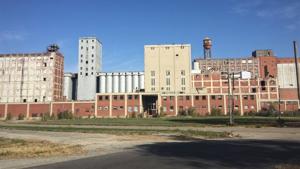(The Center Square) – With the help of local, state and federal taxpayer funds, Illinois’ capital city is turning the decrepit old Pillsbury Mill into an economic renewal project.
The 100-year-old Pillsbury Mill flour and grain plant in Springfield has been abandoned and deteriorating for 20 years. The 18-acre site has a total of 23 buildings, including a 242-foot high headhouse and 160 100-foot tall silos. The 500,000 square feet factory also contains lead paint and asbestos, necessitating a costly EPA-approved brownfield clean-up.
Despite its location in a community of educated workers that is next door to a railyard with nationwide connections, no developer has been willing to take on the estimated $10 million cost of demolition and cleanup, said Chris Richmond, president and treasurer of the non-profit Moving Pillsbury Forward. In the plant’s heyday, Richmond’s father worked at the Pillsbury Mill.
Alongside community allies, Richmond created MPF to determine how to demolish the plant and attract a developer.
“The cleanup project is intimidating, daunting and expensive but MPF is determined to rid Springfield of what has become a symbol of decay and hopelessness. It is unacceptable to have it at the center of the community,” Richmond said.
In 2021, the U.S. Congress passed the bipartisan 2021 Infrastructure Investment and Jobs Act that included $1.2 billion in federal taxpayer funds for brownfield cleanup.
“If ever there was a time to do this project, our engineers advised us that this is the time,” Richmond said.
MPF announced its approval for $2 million in federal tax funds for brownfield remediation in January 2023. The project also secured $2 million from the city of Springfield and $1.2 million in state funding in addition to $800,000 from the U.S. EPA. So far MPF has raised $6 million of the $10 million needed for the demolition and renewal.
“We’re aiming at 24 to 36 months to have the site cleared for redevelopment,” Richmond said, a timetable he said surprises a lot of people.
Meanwhile, Richmond and his MPF colleagues are working with historians to collect oral histories from people who worked at the plant.
“Just this week, I connected with a guy whose grandfather worked at the plant during World War II,” Richmond said. “His grandfather told him that the plant worked with the War Department during World War II to develop a more stable flour with a longer shelf life that could be transported around the world as part of the war effort.”
From the beginning of their effort, MPF has invited local artists and photographers to the plant so that they can document the site and make art.
“We recognized early on that we had some high-level street artists that had visited the site prior to our ownership. So we documented what was there,” he said.
One day last summer, Richmond and a colleague came across two graffiti artists who were spray painting some walls. Instead of chasing them away, they got to talking and decided to work with them, Richmond said.
“All the art that they created was respectful and well-placed … We wanted to know what kind of social and cultural statements they were trying to make,” he said.
MPF wound up letting the artists create a gallery. In November, two graffiti exhibits attracted more than 1,000 people.







